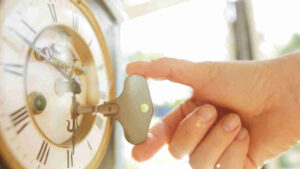Dr Boreham’s Crucible: Uscom gets an A+ for everything but its share price

Pic: Oscar Wong / Moment via Getty Images
We hate to sound like an old school report, but it’s been a year of steady and solid progress for the maker of non-invasive cardiac and pulmonary measuring devices, especially in its key target market of China.
Achievements include record revenues and increased sales for Uscom’s (ASX:UCM) existing product suite, “despite an increasingly difficult and unpredictable international commercial environment”.
Uscom also expanded its reach, notably in China where it has two products approved (one of them re-approved), with seven more applications lodged.
Uscom has established a Chinese subsidiary, expanded its manufacturing facility in Budapest, created a European sales hub and cheerfully participated in all school activities (sorry).
“Our products address diseases responsible for 75 per cent of the world’s mortalities: heart failure, sepsis, hypertension, asthma and [chronic obstructive pulmonary disease],” Professor Rob Phillips says.
“This is stuff that the world spends billions on.”
But there’s one key aspect in which Uscom misses an A-plus – the share price. While Uscom’s sales have grown at a 30 per cent compound rate, the shares have drifted by 15 per cent or more over the last year and the company is now valued at a mere $18m.
Professor Phillips is philosophical.
“Australians don’t get biotech as they do mining,” he says. “I’ve always joked that if I put a shovel and pick across our logo and said we were digging for lithium, we would be a $1 billion company.”
(Actually, the lithium price has tanked, but we take your point Rob).
We’ll put the share malaise down to the disruptive ratbag investors in the back row.
Just to recap
Uscom (as in Ultra-Sonic Cardiac Output Monitors) listed in December 2003 after being founded by Professor Phillips, ultrasound specialist and University of Queensland professor of medicine.
The best thing to come out of Coffs Harbour since Ladyfinger bananas, Professor Phillips saw a better way of measuring blood flows in and around the heart than a highly invasive pulmonary artery catheter.
“Blood pressure measurement techniques have almost always got it wrong because they measure the wrong things using the wrong devices,” Professor Phillips says. “It’s about the circulation – and blood pressure is only a part of that.”
“Furthermore, blood pressure in the arm is less accurate and predictive than pressure at the heart, which we measure [with the company’s BP+ product].”
Uscom currently has three approved products (and several iterations of these devices).
The lead product, Uscom 1A, is a cardiac output monitor for sepsis, fluid, heart failure, hypertension and pre-eclampsia, or hypertension in pregnancy.
BP+, a central blood pressure monitor, was owned by New Zealand’s Pulsecore, and bought by Uscom in 2013.
Acquired via the purchase of the Budapest-based Thor Laboratories in 2015, Spirosonic is an ultrasonic spirometer for asthma and chronic obstructive pulmonary disease.
All three are approved in Europe (CE Mark) and by the Australian Therapeutics Goods Administration, while Uscom 1A is also approved by China’s National Medical Products Administration and cleared in the US (as a 510K device) by the Food and Drug Administration.
BP+ and Spirosonic are subject to FDA submissions. In China, BP+ has been pre-approved while Spirosonic awaits final testing.
Sweet new product suite
Uscom is developing Spirosonic Air, a wireless home testing device for asthma and chronic obstructive pulmonary disease. This one is still undergoing European certification.
In late August, the company said it had won CE Mark approval for three Spirosonic iterations: Flo, Smart and Mobile. Technically they were re-approvals, because the relocation of manufacturing to Budapest required a fresh application.
This process also interrupted manufacturing (and sales) for three months.
Professor Phillips notes the CE Mark imprimatur allows the company to sell into most South East Asian countries as well as Middle Eastern markets.
“We have a number of partners keen to advance sales in these jurisdictions who have been waiting on the CE approvals,” he says.
Despite Uscom specialising in non-invasive technologies, Professor Phillips says the approval processes have become more complex and time consuming.
On board the slow boat to China
Unusually for a biotech, more than half of Uscom’s revenues are already gleaned from China, where the company has created a Beijing subsidiary.
Hanging out the shingle wasn’t just a matter of renting an office and some pot plants, with 13 regulatory steps along the way. It also took more than a decade’s work.
“The secret is process and patience and relationships,” Professor Phillips says. “You need to be prepared to take time with those relationships.”
While China is a notoriously difficult market, Professor Phillips says the country has a more stable and growing health system than the US, where of course Uscom also operates.
“In China there are a lot of things that could go wrong but you have stable fixed objectives and goals,” he says. “They have a long-term plan, not a day-to-day plan.”
Uscom’s Chinese push was driven by its recently appointed director of China operations, Teresa Guo, a master of pharmacy from University College London.
“She prepared and guided all of our approvals and operations, and set up a new distribution system and arranged partners,” Professor Phillips says.
Notably, the company has restructured and expanded from 10 Chinese distributors to nearly 40, allowing a “more direct pathway” to 10,000 hospitals.
“We will control our entire product delivery pathway,” Professor Phillips says. “We are doubling our margin and doubling our number of distributors.
“Previously we had to sell to a master distributor, who sold to a distributor, then a sub distributor who then sold to a sub sub distributor. Now we have our own system.
“This approach should more than double our margin and it should more than double our volume.”
While Uscom sells mainly to hospitals, it is also targeting the Chinese home market with products such as BP-plus and Spirosonic.
The company is also eyeing acquisitions in related fields. “There’s a company we are looking at the moment,” Professor Phillips says. “It’s very inexpensive and has very good technology. Technically they’re great and will fit our new distribution nicely.”
Uscom’s equal biggest shareholder Stephen Meng is also a key weapon in opening doors in China, having been a founder and marketing director for the $10 billion Beijing-based, Hong Kong-listed Sihuan Pharma.
Tackling the western world markets
Professor Phillips notes that China spends about 5 per cent of its GDP in health, but Beijing wants to get this proportion to 12 per cent “because that is the metric of an advanced economy.”
The US in contrast spends 18 per cent of its national income on health – but is striving to reduce this to 12 per cent.
While highly controlled and protected, the US remains an attractive market to Uscom, if only because of its sheer size.
Professor Phillips expects the FDA to approve both BP+ and Spirosonics.
He describes Europe as a “big blancmange”, with different regulatory settings in every jurisdiction. “You do your best there and get what you can out of it, but we are starting to grow that too.”
Finances and performance
Uscom boosted sales by 29 per cent in the 2018-19 year, to $2.84m.
In the September quarter it generated customer receipts of $727,101, up 128 per cent and reported a $469,724 deficit.
While losses are narrowing, management warns operating costs are likely to remain high as global regulatory and marketing initiatives are finalised.
As of September, Uscom had $1.83m of cash after a placement that raised $1.05m at 10c a share.
The takers? Professor Phillips put up his hand for 3 million shares ($300,000), while Uscom China boss Ms Guo said “shi” to 4 million ($400,000) of scrip.
Major shareholder Meng Xianhui has been invited to subscribe for 3.5 million shares ($350,000).
Post raising, both Professor Phillips and Meng have emerged with about 20 per cent of the company.
Over the last 12 months, Uscom shares have traded between 18c (late March 2019) and 9.5c (late August 2018). A decade ago, the shares peaked at 80c.
Dr Boreham’s diagnosis:
With established sales and a promising route to China, Uscom is a clear candidate for dux of the class (specialist medical device stream).
The company’s digital offerings are especially suited to the electronic health sector, which is now being vigorously pursued by the likes of Google, Microsoft, Apple and — speaking of China — Tencent and Huawei.
But as the good professor notes, global conditions are choppy at the moment and this one needs time.
The company doesn’t exactly have the field to itself, either: Uscom 1A competes with about 11 other products, four of them non-invasive.
Professor Phillips argues the company could make itself profitable now by shelving its growth plans, but he is striving for earnings of perhaps $40m rather than, say, $4m.
“Because we have high margin products, profitability will come quite quickly,” he says.
“We don’t need to spend any more. We have acquired companies, built offices and established international manufacturing. All of our stuff is done. Our costs should diminish and our revenue should grow.”
Uscom’s lowly market cap makes for an intriguing comparison with the ASX-listed Respiri (formerly Isonea and Karmelsonix) which is seeking European approval for its ‘Wheezo’ asthma device.
The last time we looked, the pre-revenue Respiri was valued at $36m and a few months ago was worth close to $100m, despite almost continuous board and management changes.
Disclosure: Dr Boreham is not a qualified medical practitioner and does not possess a doctorate of any sort. But all his vital signs are tickety-boo and not so wheezy.
This column first appeared in Biotech Daily.
Now watch: 90 Seconds with… Rob Phillips, Uscom Limited
Read more from Tim Boreham:
Genetic Signatures lures the deep-pocketed backers in the battle of the bugs
PainChek on a painless path to success; shares up over 1000 per cent
Also check out his new Health Kick podcast:
UNLOCK INSIGHTS
Discover the untold stories of emerging ASX stocks.
Daily news and expert analysis, it's free to subscribe.
By proceeding, you confirm you understand that we handle personal information in accordance with our Privacy Policy.








